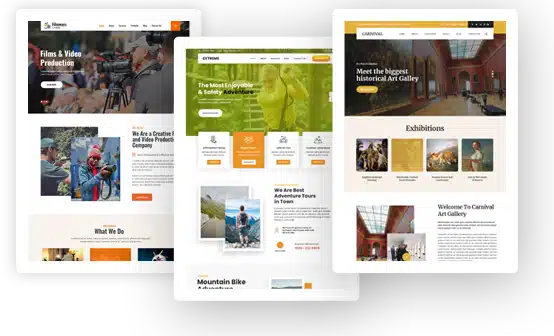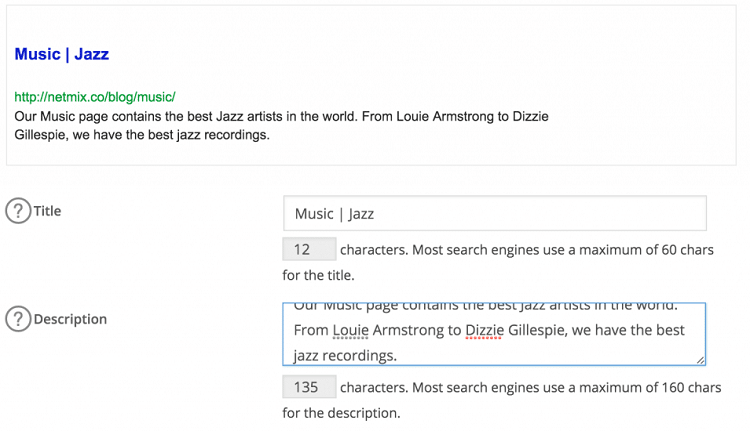How to Optimize WordPress Posts Before Hitting Publish
WordPress is the most popular content management system (CMS) on the planet. It currently operates as the foundation for roughly 34% of all websites on the internet. This means that just publishing a blog or website with WordPress isn’t enough to get it noticed – you’ll need to do more.
Whether you’re a blogger, business owner, e-commerce seller, or developer, it’s helpful to be as familiar with WordPress as possible. One thing you should understand is how to make the most of what you send out to cyberspace.
Here are 8 things you can do to fully optimize every WordPress post before you hit “Publish.” This will help ensure that you get attention from search engines and the site visitors you’re targeting as well as improve the performance of your website.
-
Choose the Right Title
Your headline or post title is going to be the first thing that people see, so it better be good. If it’s terrible, it will be the only thing that people see because no one will click on your link to read the post.

There isn’t a one-size-fits-all solution to strong headlines, but some types of headlines to better than others. For example, “How to” guides and headlines that feature numbers get the most clicks. However, avoid deceiving and annoying “clickbait” headlines.Beyond this, a headline should be up to 70 characters (not words) in length and include your chosen keyword phrase. It should also be enclosed in an H1 tag to tell the search engines that this is your title.
-
Reduce Image Size
When it comes to search engine rankings and keeping readers from abandoning your website, page load speed matters. While you want to have clear and crisp images on your WordPress posts, they can’t be so large that they slow down your website.
Before you publish your next post, you should optimize it by reducing the size of your images. Assuming you have an image that 3000px X 4000px, you can significantly reduce the size of that image using several methods.
First, you can crop the image as long it doesn’t remove any important parts. A better alternative is to use an image optimization WordPress plugin such as EWWW Image Optimizer that will reduce image sizes automatically. Additionally, make sure that you are using a WordPress web host that offers the best performance.
-
Add Your Keywords
While you don’t want keywords to direct your content, they should play a role for the sake of search engine optimization (SEO). You can determine which keywords and phrases get the most searches and are least competitive with some simple research.
Once you know what your target audience is looking for, add a few of these keywords and variations of them into your title, content, and headings to optimize your post. When you use SEO plugins like All in One SEO Pack, it can tell you how you’re doing with regards to your chosen word or phrase.
-
Write a Meta Description
Before you can reach your intended audience, you’ll first need to get the attention of the search engines. An SEO plugin also can help you do this, but you’ll need to do some additional work. One step involves creating a compelling meta description for your post.

The meta description is the string of text you see underneath the page’s title in the search results. This is meant to summarize your content, so searchers have a better idea of what they’re about to read.Your meta description should be limited to 160 characters (not words), so you don’t have much space. Your SEO plugin will also enable you to customize this so that you can make those words count.
-
Add Engaging Media
All the formatting in the world isn’t going to matter if you aren’t producing engaging content. Instead of writing what you want to write, take some time to figure out what your target audience wants to read, and then produce that.
Content written for the web is much different than print or academic writing. Readers won’t tolerate a “wall of words” and want to see a mixture of media. Add some images, videos, and infographics to your content to keep it interesting.
-
Format & Proofread Your Content
We already talked about using paraphrasing tools to keeping paragraphs short for a WordPress post, but you should also make heavy use of section titles. Content on the web should be “skimmable,” meaning a reader should be able to skip to the sections that are most relevant to them.
After you’ve created your headings, format them with H2 and H3 tags. Bullet points are also useful in writing content that gives instructions or includes a list of pros, cons, or benefits.
Finally, don’t forget to proofread your content before publishing. It helps to let it sit for a day (or a few hours) before you give it another look. Spell checkers are fine for a first pass but don’t rely on them. Instead, read your post out loud for the best chance of spotting errors.
-
Add Internal and External Links
It’s a common misconception that links no matter for SEO. This isn’t the case, but your linking must be relevant. You should add two types of links sparingly to optimize your WordPress post – internal links and external links.
Internal links are links to other related posts on your own WordPress site. External links refer to links that connect to other content on the web, such as a few of the WordPress plugins that we’ve linked to above.
When you add links to your post, manually check that they work before you hit “Publish.” This can help you avoid having broken links on your site.
-
Encourage Engagement
Anything you post should encourage engagement to get the most return for your efforts. If you want readers to click through to a sales page or opt-in, be sure to include a call to action (CTA).
You can prompt discussion in the comments section by asking a few questions at the end of your post. And, don’t forget to include social sharing buttons so that your readers can “share” your content on social media.
Conclusions
It would be a shame to spend a ton of time on your WordPress post and have those efforts be wasted. Taking a few extra steps before publishing your content can not only help your site rank better in the search engines but also help you achieve whatever goals you’ve set for your online presence.


